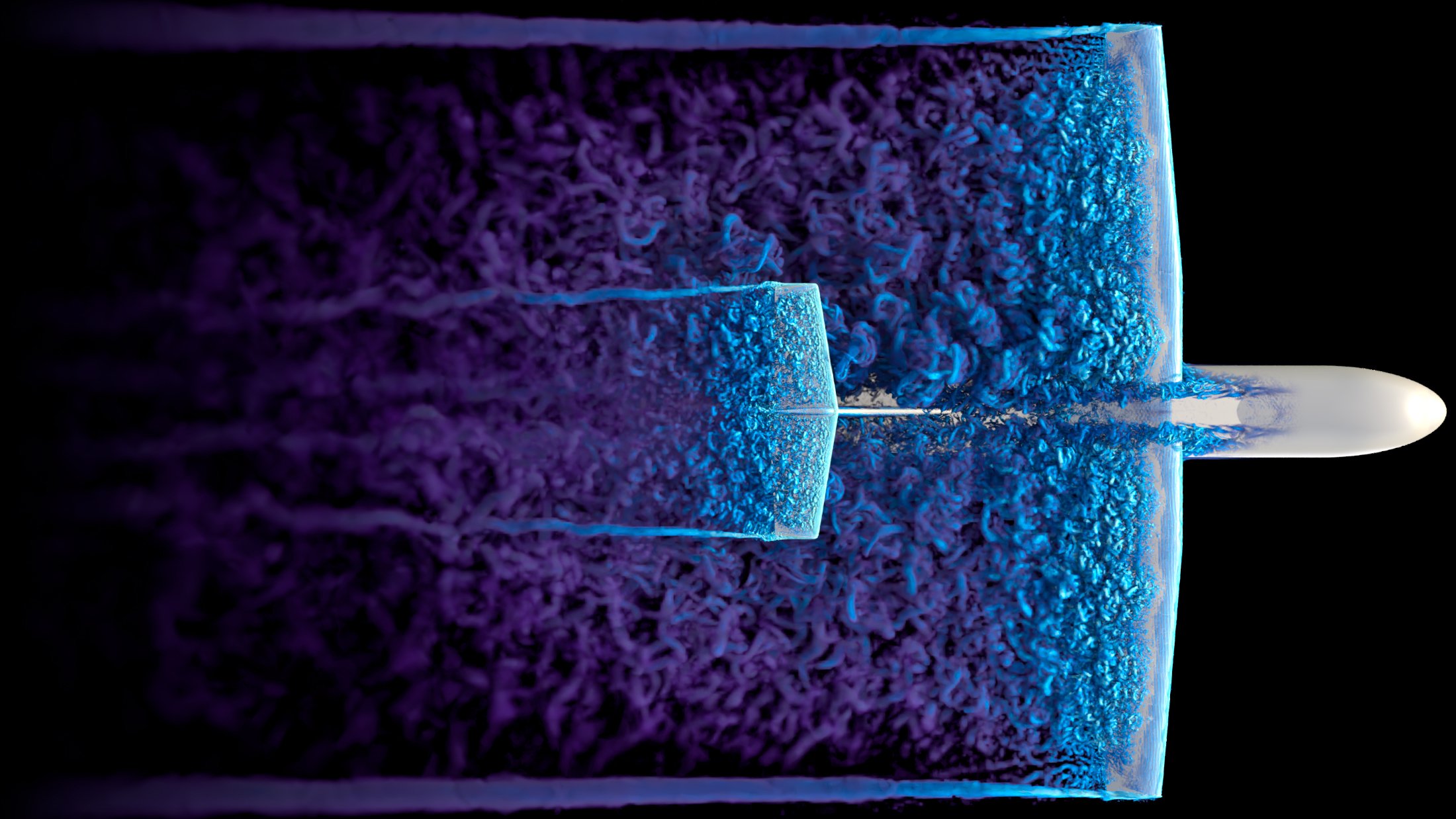Simulation of the Airflow Around an Airplane

Authors: Guillermo Marin, Jeronimo Calderon, Miguel Esteban, Oriol Lehmkuhl
(Barcelona Supercomputing Center, Spain)
This visualization displays the air vorticity around an airplane at angle of attack 15 as a volume render, with q-vorticity mapped to density and velocity magnitude to color. We used a proprietary pipeline to convert simulation outputs into the OpenVDB (Museth, K., et al. (2013). OpenVDB: an open-source data structure and toolkit for high-resolution volumes. In Acm siggraph 2013 courses (pp. 1-1).) volume format. Our implementation preserves the size differences between computational mesh elements, creating a multi-resolution volumetric format. The simulation output, with ~400 million integration points, was converted to a multi-resolution volume containing ~105 million voxels. Since OpenVDB is widely supported by most visual effects software, our pipeline bridges simulation data with high-end cinematic production tools, providing enhanced control over image quality. This image has been produced in SideFX Houdini.
While there have been numerous applications of large eddy simulations (LES) to complex flows, their application to practical engineering configurations, such as full aircraft models, have been limited to date. Recently, however, advances in rapid, high quality mesh generation, low-dissipation numerical schemes and physics-based subgrid-scale and wall models have led to accurate simulations of a realistic aircraft in landing configuration in less than a day of turnaround time with modest resource requirements [2]. In the work paper, a systematic study of the predictive capability of LES across a range of angles of attack (including maximum lift and post-stall regimes), the robustness of the predictions to grid resolution, and the incorporation of wind tunnel effects has been carried out. To carry out the calculations, the open source CFD code, SOD2D [3] is used together with MareNostrum 5 (https://gitlab.com/bsc_sod2d/sod2d_gitlab). MN 5 is a pre-exascale EuroHPC supercomputer hosted at BSC-CNS. The system is supplied by Bull SAS combining Bull Sequana XH3000 and Lenovo ThinkSystem architecture and it has a total peak computational power of 314PFlops. SOD2D has been developed with the aim of efficiently leveraging the computational power that is being deployed world- wide in which GPU plays a central role. In SOD2D, the filtered compressible Navier-Stokes equations are numerically solved using a low-dissipation spectral element method (SEM) methodology. For the temporal discretization, strong stability preserving (SSP) Runge-Kutta 4th order method is used. Projection stabilization precludes numerical oscillations due to dominant convection, while introducing very low numerical dissipation, entropy viscosity approaches are used for shock capturing. The aliasing effects of the reduced order integration caused by employing SEM integration for convective terms are countered with an energy conserving splitting. The Vreman subgrid-scale model is used, along with a equilibrium wall method to represent the inner part of the boundary layer [4].
One of NASA’s 2030 Grand Challenges is to numerically analyze the performance of a powered aircraft configuration across the entire flight envelope through high-fidelity models. The computational resources needed for LES are still beyond current capabilities, so WMLES is the best alternative. In this study, a data-driven wall-modeling methodology is proposed. The results presented herein suggest that this combined approach (meshing, numerical algorithms, modelling, efficient computer implementation) is on the threshold of readiness for industrial use in aeronautical design. However, the observed results showed that the current state models have difficulties in recirculation regions where the models may show suboptimal results. Current and future work is to include non-equilibrium effects on the wall models, using thin layer pre calculated solutions or taking advantage of data driven models [4], and extending the models to non-isothermal high speed flows.
References:
[2] Goc KA, Lehmkuhl O, Park GI, Bose ST, Moin P. Large eddy simulation of aircraft at affordable cost: a milestone in computational fluid dynamics. Flow. 2021;1:E14. doi:10.1017/flo.2021.17
[3] L. Gasparino, F. Spiga, O. Lehmkuhl, SOD2D: A GPU-enabled Spectral Finite Elements Method for compressible scale-resolving simulations, Computer Physics Communications, Volume 297,2024
[4] Radhakrishnan, S., Calafell, J., Miró, A., Font, B. and Lehmkuhl, O. (2024), "Data-driven wall modeling for LES involving non-equilibrium boundary layer effects", International Journal of Numerical Methods for Heat & Fluid Flow, Vol. 34 No. 8,
